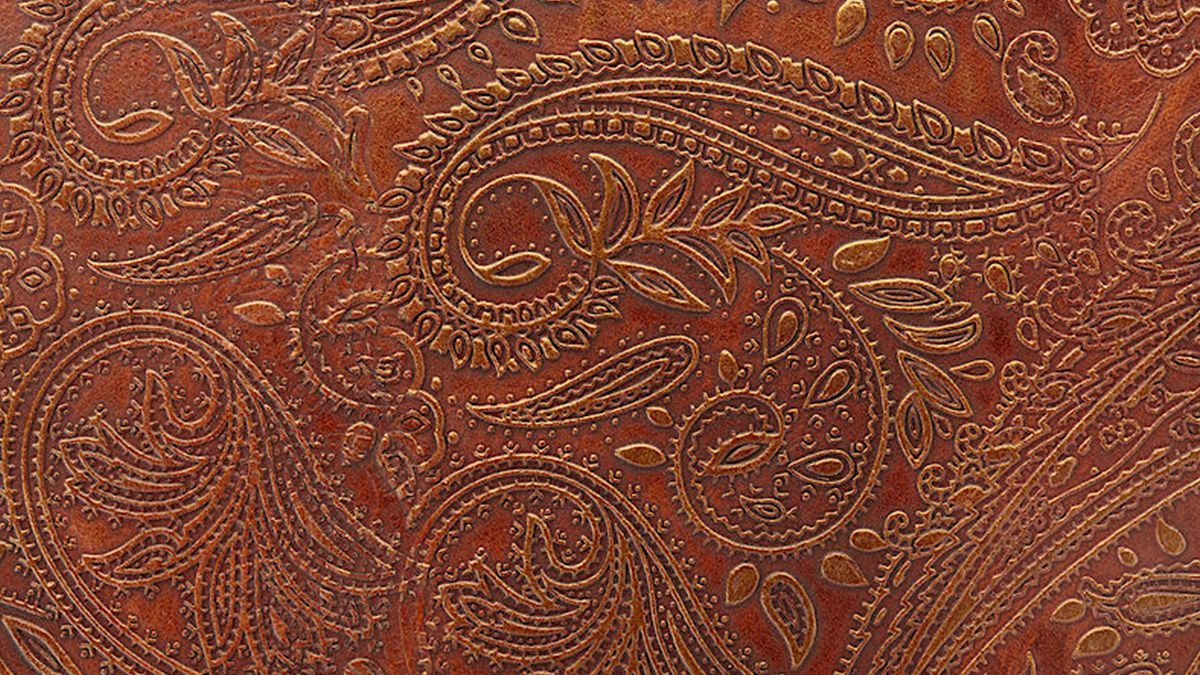Etching is a technique to process the surface of the object by using chemical strong acid corrosion, mechanical polishing, or electrochemical electrolysis. In addition to enhancing aesthetics, it furthermore increases the added value of the object. Procedures from traditional metal processing to high-tech semiconductor manufacturing are all within the scope of applications of etching technique.
What Is Metal Etching?
Metal etching is a technique in which metal materials are removed by a chemical reaction or physical impact. Metal etching technology can be divided into wet etching and dry etching. Metal etching is composed of a series of chemical processes. Different etchants have different corrosion properties and strengths for different metal materials.
Metal etching, also called photochemical etching, refers to the removal of the protective film of the metal etching area after exposure. Through contact with chemical solutions, the surface of a metal plate will be dissolved and form hollowed out areas. It was first used in the manufacturing of copper plate, zinc plate, and other concave and convex printing plates. It was widely used to reduce the weight of instrument panels, and for the processing of thin workpieces such as nameplates. Through continuous improvements in the technology of process equipment, etching technology has now been developed for use in the aviation, machinery, and chemical industry, as well as for use in semiconductor manufacturing processes, and the processing of precision metal etching products and thin electronic parts.
Types of Etching Technology
-
Wet Etching:
Metal etching, also called photochemical etching, refers to the removal of the protective film of the metal etching area after exposure. Through contact with chemical solutions, the surface of a metal plate will be dissolved and form hollowed out areas. It was first used in the manufacturing of copper plate, zinc plate, and other concave and convex printing plates. It was widely used to reduce the weight of instrument panels, and for the processing of thin workpieces such as nameplates. Through continuous improvements in the technology of process equipment, etching technology has now been developed for use in the aviation, machinery, and chemical industry, as well as for use in semiconductor manufacturing processes, and the processing of precision metal etching products and thin electronic parts.
-
Dry Etching:
Dry etching is usually either plasma etching, or chemical etching. Different etching effects will depend on the physical beam of the ions in the plasma, or the reaction of chemicals with the surface atoms of the material to be etched, or a combination of both. Dry etching can include the following:
- Physical etching: Sputter Etching, Ion Beam Etching
- Chemical etching: Plasma Etching
- Physical and chemical composite etching: Reactive Ion Etching (RIE)
Dry etching is an anisotropic etching process with good directional properties but it has poorer selectivity than wet etching. In plasma etching, plasma, (a partially dissociated gas), and gas molecules are dissociated into electrons, ions, and other species with high chemical activity. The biggest advantage of dry etching is it is "anisotropic etching" meaning the etching can be directed in a single direction. However, the selectivity of dry etching is lower than that of wet etching. This is because dry etching is a physical interaction; therefore, the impact of ions can not only remove the etched film but also the photoresist mask.
Etching Process
Depending on the type of metal, the etching process will vary, but the general etching process is as follows: metal etching plate → cleaning and degreasing → water washing → drying → film or screen-printing ink → drying → exposure graphics → development → water washing drying→etching→unfilming→drying→inspection→package of the finished product.
-
Cleaning Process Before Metal Etching:
Before the etching of stainless steel or other metals, cleaning treatments are used to remove dirt, dust, oil stains, etc. from the surface of the material. The cleaning process is key to ensuring that the subsequent film or screen-printing ink has good adhesion to the metal surface. Therefore, it is necessary to completely remove the oil and oxide film on the metal surface to be etched. Degreasing should be performed according to the oil contamination of the workpiece. It is best to electro-degrease before screen-printing to ensure complete degreasing. To ensure that the surface is cleaned of any oxide film, a good etching solution should be used, taking into consideration the type of metal to be etched and film thickness. The surface must be dried before screen printing. If there is moisture, it will also affect the adhesion of the ink and affect the etching pattern.
-
Paste Dry Film or Silkscreen Ink Photosensitive Adhesive Layer:
According to the actual product material, thickness, and the precise width of the graphics, confirm the use of dry film or wet film screen printing. For different thickness products, when applying the photosensitive layer, the etching processing time and other factors required for the product graphics should be taken into consideration. A thicker or thinner photosensitive adhesive layer can be made, so that the covering performance is good, and the pattern produced by metal etching has a high definition.
-
Dry:
After the film or roll-on screen-printing ink is completed, the photosensitive adhesive layer needs to be thoroughly dried to prepare for the exposure process. At the same time, it is necessary to ensure that the surface is clean, free of adhesion, impurities, etc.
-
Exposure:
This process is an important process of metal etching, and the exposure energy will be considered according to the thickness and precision of the material of the product. This is also a manifestation of the technical capabilities of an etching processing company. The exposure process determines whether the etching can ensure better dimensional control accuracy and other requirements.
-
Development:
This process is an important process of metal etching, and the exposure energy will be considered according to the thickness and precision of the material of the product. This is also a manifestation of the technical capabilities of an etching processing company. The exposure process determines whether the etching can ensure better dimensional control accuracy and other requirements.
-
Etching or Etching Process:
After the product pre-manufacturing process is completed, the chemical solution will be etched. This process determines whether the final product is qualified. This process involves the concentration, temperature, pressure, speed, and other parameters of the etching solution. The quality of the product needs to be jointly determined by these parameters.
-
Removal:
The surface of the etched product is still covered with a layer of photosensitive glue, and the photosensitive glue layer on the surface of the product after the etching process needs to be removed. Since the photosensitive adhesive layer is an acidic substance, most of them use the acid-base neutralization method for bulking. After overflow water washing and ultrasonic cleaning, the photosensitive adhesive layer on the surface is removed to prevent the residue of the photosensitive adhesive.
-
Detection:
After the removal of the film is completed, follow-up testing is done to confirms that the final finished product meets specifications and is packaged.
Matters Needing Attention in An Etching Process
- Reduce Side Corrosion and Protruding Edges, Improve Metal Etching Processing Coefficient:
Generally, the longer the printed board is in the metal etching solution, the more serious the side etching. Undercutting seriously affects the accuracy of printed wires, and severe undercutting will make it impossible to make fine wires. When the undercut and the edge are reduced, the etching coefficient increases. A high etching coefficient indicates the ability to maintain thin wires and make the etched wires close to the size of the original image. No matter whether the electroplating etching is tin-lead alloy, tin, tin-nickel alloy, or nickel, etc., excessive protruding edges will cause short circuits in the wires. Because the protruding edge is easily broken, an electrical bridge is formed between the two points of the wire.
- Improve The Consistency of The Etching Processing Rate Between the Board and The Board:
In continuous board etching, the more consistent the metal etching processing rate, the more uniformly etched boards can be obtained. To always maintain the best etching state during the pre-etching process, it is necessary to choose an etching solution that is easy to regenerate and compensate, and has an etching rate that is easy to control. Select technology and equipment that can provide constant operating conditions and can automatically control various solution parameters. It can be achieved by controlling the amount of dissolved copper, PH value, solution concentration, temperature, uniformity of solution flow, etc.
- Improve The Uniformity of The Metal Etching Processing Rate of The Entire Board Surface:
The etching uniformity of the upper and lower sides of the board and each part on the board surface is determined by the uniformity of the metal etchant flow rate on the surface of the board. During the etching process, the etching rates of the upper and lower plates are often inconsistent. The etching rate of the lower plate surface is higher than that of the upper plate surface. Because of the accumulation of solution on the upper plate surface, the etching reaction is weakened. The uneven etching of the upper and lower plates can be solved by adjusting the spray pressure of the upper and lower nozzles. Adopting a spray system and swinging the nozzle can further improve the uniformity of the entire surface of the board by making the spray pressure at the center and the edge of the board different, and intermittently etching the metal at the front and back of the board.
Advantages of the Etching Process
Because the metal etching process is etched through chemical solutions.
- Maintain a high degree of consistency with the raw materials. It does not change the properties of the material, the stress of the material, and the hardness, tensile strength, yield strength, and ductility of the material. The base processing process is etched in the atomized state in the equipment, and there is no obvious pressure on the surface.
- No burrs. During the product processing, there is no pressing force during the whole process, so there will be no curling, bumps, or pressure points.
- It can cooperate with the post-process stamping to complete the individual forming of the product, and can carry out full-page electroplating, adhesive, electrophoresis, blackening, etc. in way which is more cost-effective.
- Miniaturization and diversification can also be dealt with; the cycle is short, and the cost is low.







.png)






